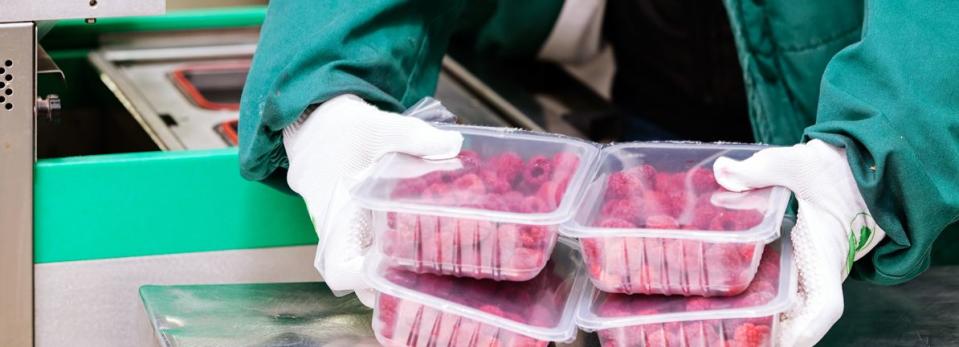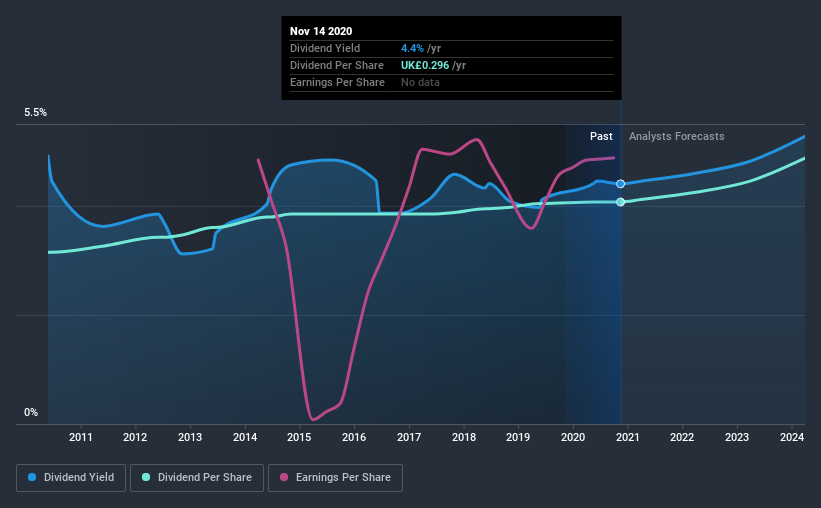Tate & Lyle plc (LON:TATE) Stock Goes Ex-Dividend In Just Three Days

Readers hoping to buy Tate & Lyle plc (LON:TATE) for its dividend will need to make their move shortly, as the stock is about to trade ex-dividend. If you purchase the stock on or after the 19th of November, you won't be eligible to receive this dividend, when it is paid on the 6th of January.
Tate & Lyle's next dividend payment will be UK£0.088 per share, and in the last 12 months, the company paid a total of UK£0.30 per share. Based on the last year's worth of payments, Tate & Lyle stock has a trailing yield of around 4.4% on the current share price of £6.722. Dividends are an important source of income to many shareholders, but the health of the business is crucial to maintaining those dividends. As a result, readers should always check whether Tate & Lyle has been able to grow its dividends, or if the dividend might be cut.
See our latest analysis for Tate & Lyle
Dividends are usually paid out of company profits, so if a company pays out more than it earned then its dividend is usually at greater risk of being cut. Tate & Lyle paid out 56% of its earnings to investors last year, a normal payout level for most businesses. A useful secondary check can be to evaluate whether Tate & Lyle generated enough free cash flow to afford its dividend. It paid out more than half (58%) of its free cash flow in the past year, which is within an average range for most companies.
It's positive to see that Tate & Lyle's dividend is covered by both profits and cash flow, since this is generally a sign that the dividend is sustainable, and a lower payout ratio usually suggests a greater margin of safety before the dividend gets cut.
Click here to see the company's payout ratio, plus analyst estimates of its future dividends.
Have Earnings And Dividends Been Growing?
Companies with consistently growing earnings per share generally make the best dividend stocks, as they usually find it easier to grow dividends per share. If earnings fall far enough, the company could be forced to cut its dividend. It's encouraging to see Tate & Lyle has grown its earnings rapidly, up 128% a year for the past five years. Management appears to be striking a nice balance between reinvesting for growth and paying dividends to shareholders. With a reasonable payout ratio, profits being reinvested, and some earnings growth, Tate & Lyle could have strong prospects for future increases to the dividend.
Another key way to measure a company's dividend prospects is by measuring its historical rate of dividend growth. Tate & Lyle has delivered an average of 2.6% per year annual increase in its dividend, based on the past 10 years of dividend payments. Earnings per share have been growing much quicker than dividends, potentially because Tate & Lyle is keeping back more of its profits to grow the business.
The Bottom Line
Is Tate & Lyle worth buying for its dividend? It's good to see earnings are growing, since all of the best dividend stocks grow their earnings meaningfully over the long run. That's why we're glad to see Tate & Lyle's earnings per share growing, although as we saw, the company is paying out more than half of its earnings and cashflow - 56% and 58% respectively. While it does have some good things going for it, we're a bit ambivalent and it would take more to convince us of Tate & Lyle's dividend merits.
So while Tate & Lyle looks good from a dividend perspective, it's always worthwhile being up to date with the risks involved in this stock. For example - Tate & Lyle has 1 warning sign we think you should be aware of.
We wouldn't recommend just buying the first dividend stock you see, though. Here's a list of interesting dividend stocks with a greater than 2% yield and an upcoming dividend.
This article by Simply Wall St is general in nature. It does not constitute a recommendation to buy or sell any stock, and does not take account of your objectives, or your financial situation. We aim to bring you long-term focused analysis driven by fundamental data. Note that our analysis may not factor in the latest price-sensitive company announcements or qualitative material. Simply Wall St has no position in any stocks mentioned.
Have feedback on this article? Concerned about the content? Get in touch with us directly. Alternatively, email editorial-team@simplywallst.com.

 Yahoo Finance
Yahoo Finance 
